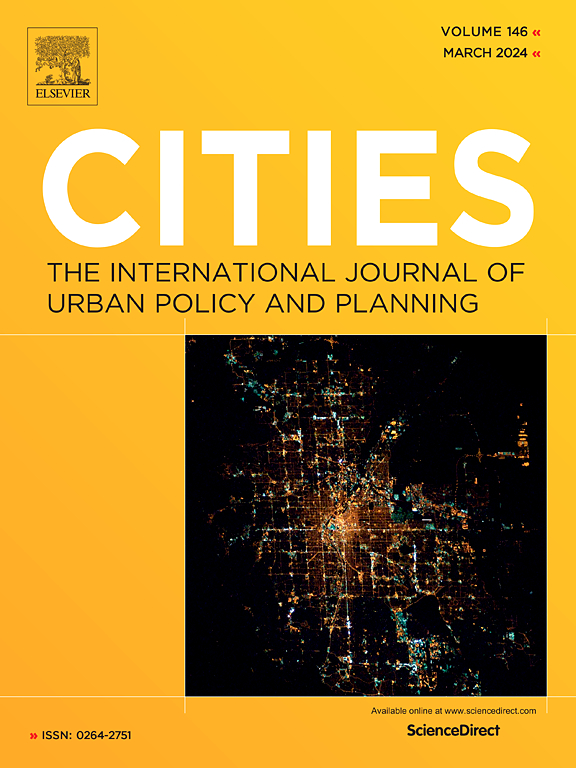Discovering microscale spatial scenes of crime with accounting for urban environmental heterogeneity
IF 6.6
1区 经济学
Q1 URBAN STUDIES
引用次数: 0
Abstract
The advent of urban big data has enabled fine-scale analysis of relationships between crime and urban facilities (typically represented by points of interest, POIs). The spatial configuration of diverse POI types can be conceptualized as crime-related spatial scenes. However, existing methods for detecting spatial scenes of crime often assume a homogeneous relationship between POIs and crime across entire urban environment, neglecting how crime risks associated with specific POIs vary within urban environmental backcloth. This research advances existing research by incorporating the spatial heterogeneity of urban environment when exploring the connections between crime and POIs. We develop an analytical framework that combines: (1) urban functional area identification and (2) spatial co-location pattern mining to detect spatial scenes of crime. This approach facilitates micro-scale spatial scene detection with improved sensitivity to functional urban area. An empirical analysis of robbery crime in New York City reveals spatial variation in crime-POIs relationship across different urban functional areas. These findings offer insights into microscale crime-environment associations and support developing spatial-scene specific crime prevention strategies.
考虑城市环境异质性的微观犯罪空间场景研究
城市大数据的出现使得对犯罪和城市设施之间关系的精细分析成为可能(通常由兴趣点(poi)表示)。不同POI类型的空间配置可以被概念化为与犯罪相关的空间场景。然而,现有的空间犯罪场景检测方法往往假设整个城市环境中poi与犯罪之间存在同质关系,而忽略了与特定poi相关的犯罪风险在城市环境背景中的变化。本研究将城市环境的空间异质性纳入城市犯罪与城市犯罪之间的关系中,进一步推进了现有研究。我们开发了一个分析框架,结合:(1)城市功能区识别和(2)空间共定位模式挖掘来检测空间犯罪场景。该方法有助于微尺度空间场景检测,提高了对功能城区的灵敏度。通过对纽约市抢劫犯罪的实证分析,揭示了不同城市功能区的犯罪- poi关系的空间差异。这些发现为微观犯罪与环境的关联提供了洞见,并为制定特定空间场景的犯罪预防策略提供了支持。
本文章由计算机程序翻译,如有差异,请以英文原文为准。
求助全文
约1分钟内获得全文
求助全文
来源期刊

Cities
URBAN STUDIES-
CiteScore
11.20
自引率
9.00%
发文量
517
期刊介绍:
Cities offers a comprehensive range of articles on all aspects of urban policy. It provides an international and interdisciplinary platform for the exchange of ideas and information between urban planners and policy makers from national and local government, non-government organizations, academia and consultancy. The primary aims of the journal are to analyse and assess past and present urban development and management as a reflection of effective, ineffective and non-existent planning policies; and the promotion of the implementation of appropriate urban policies in both the developed and the developing world.
 求助内容:
求助内容: 应助结果提醒方式:
应助结果提醒方式:


